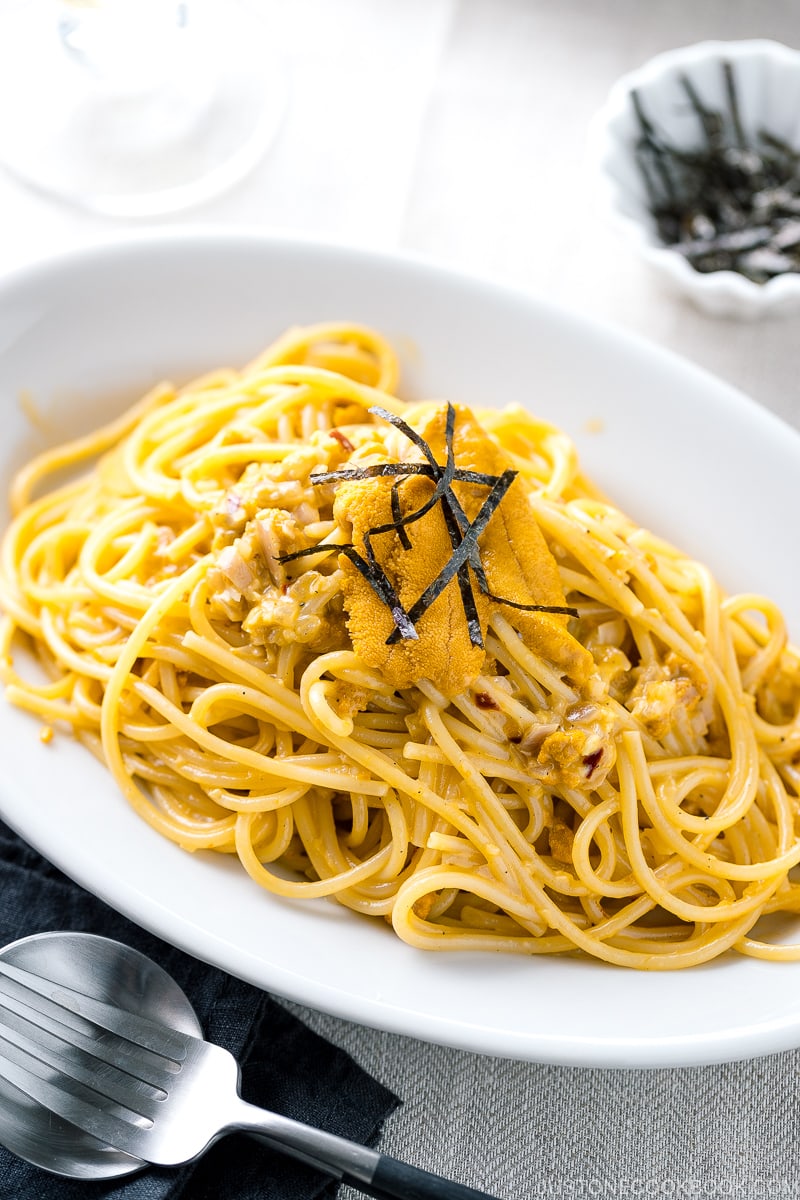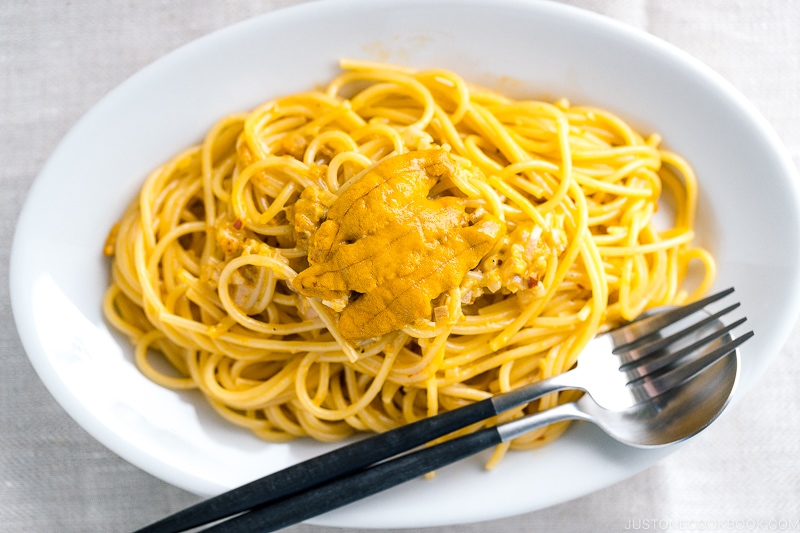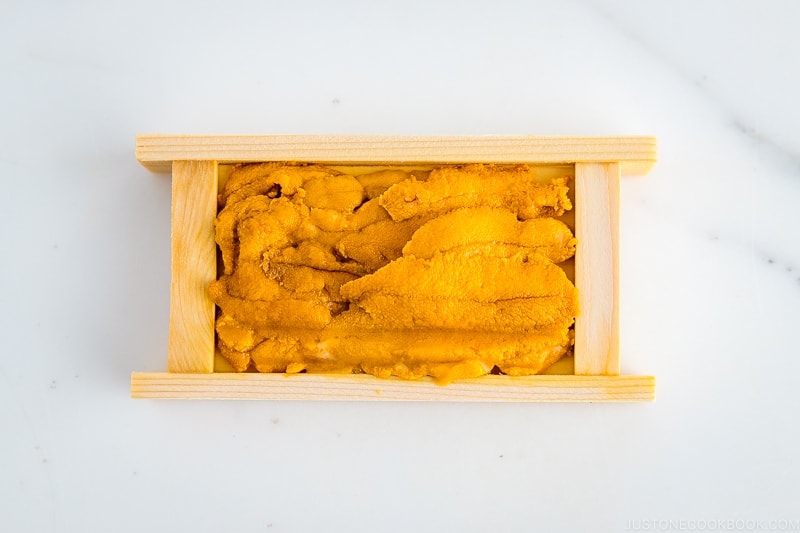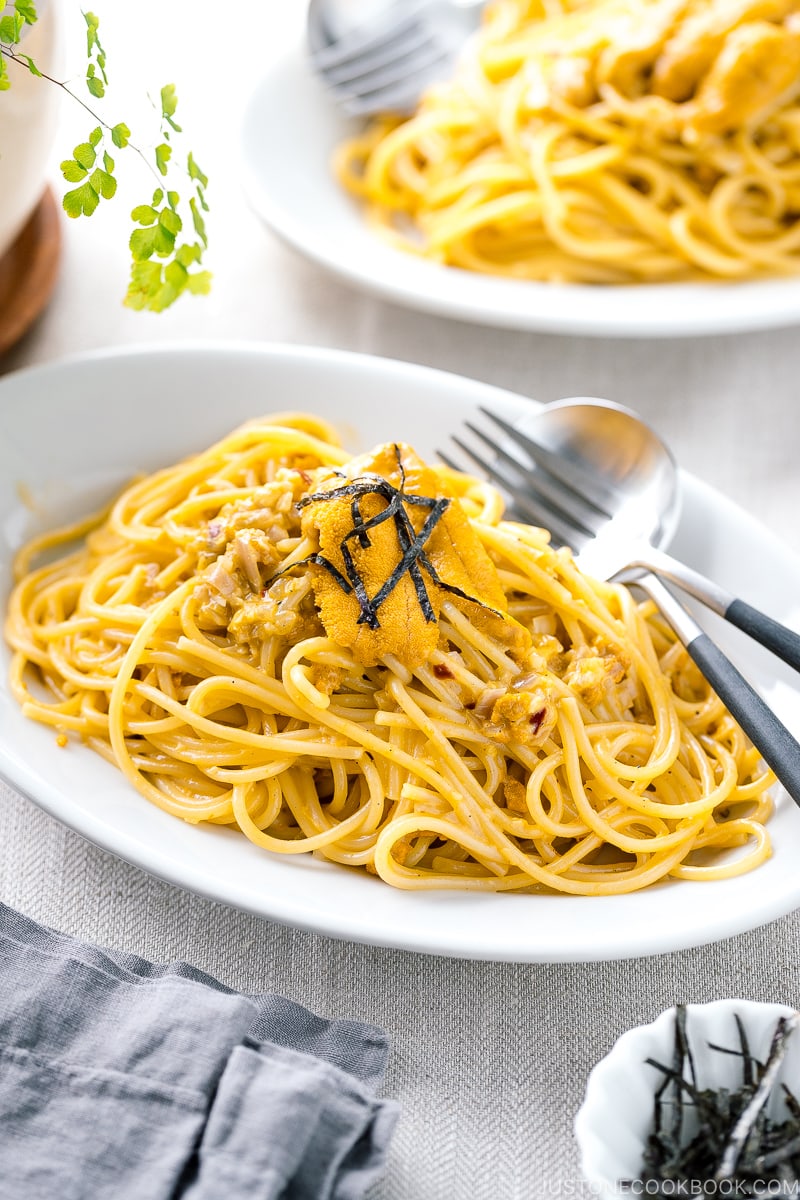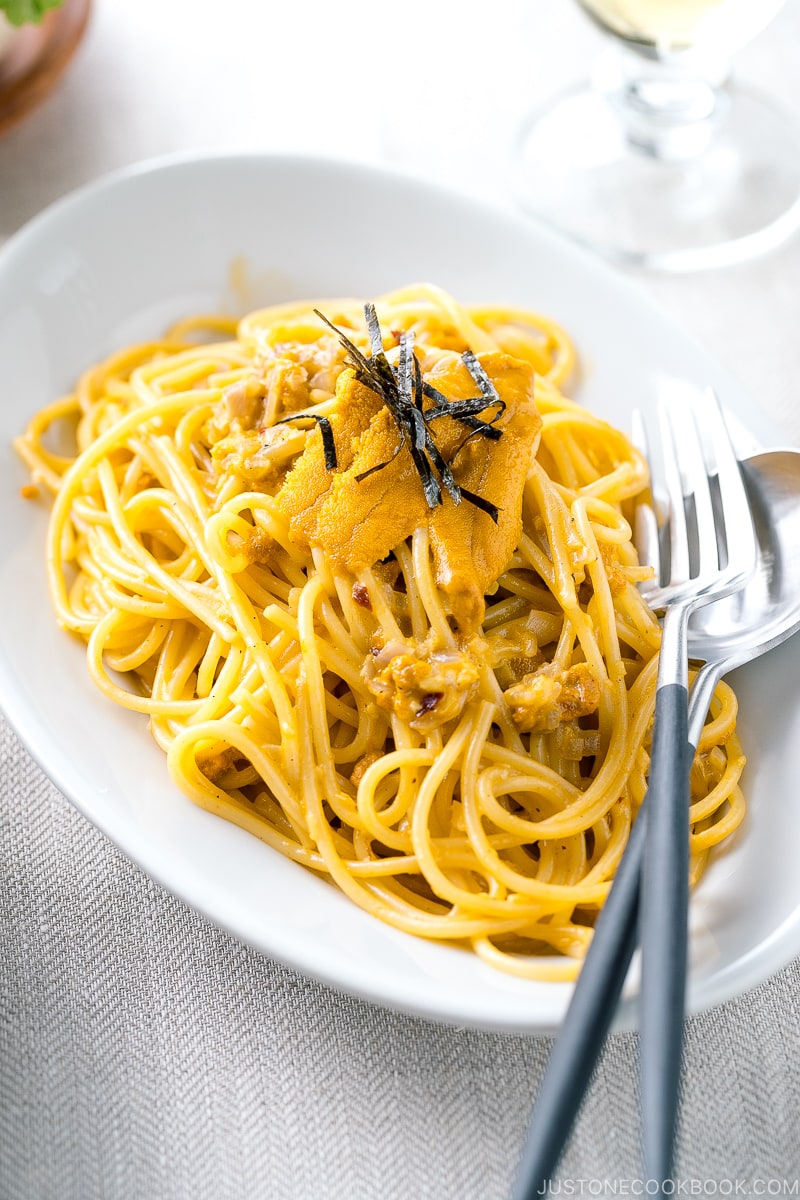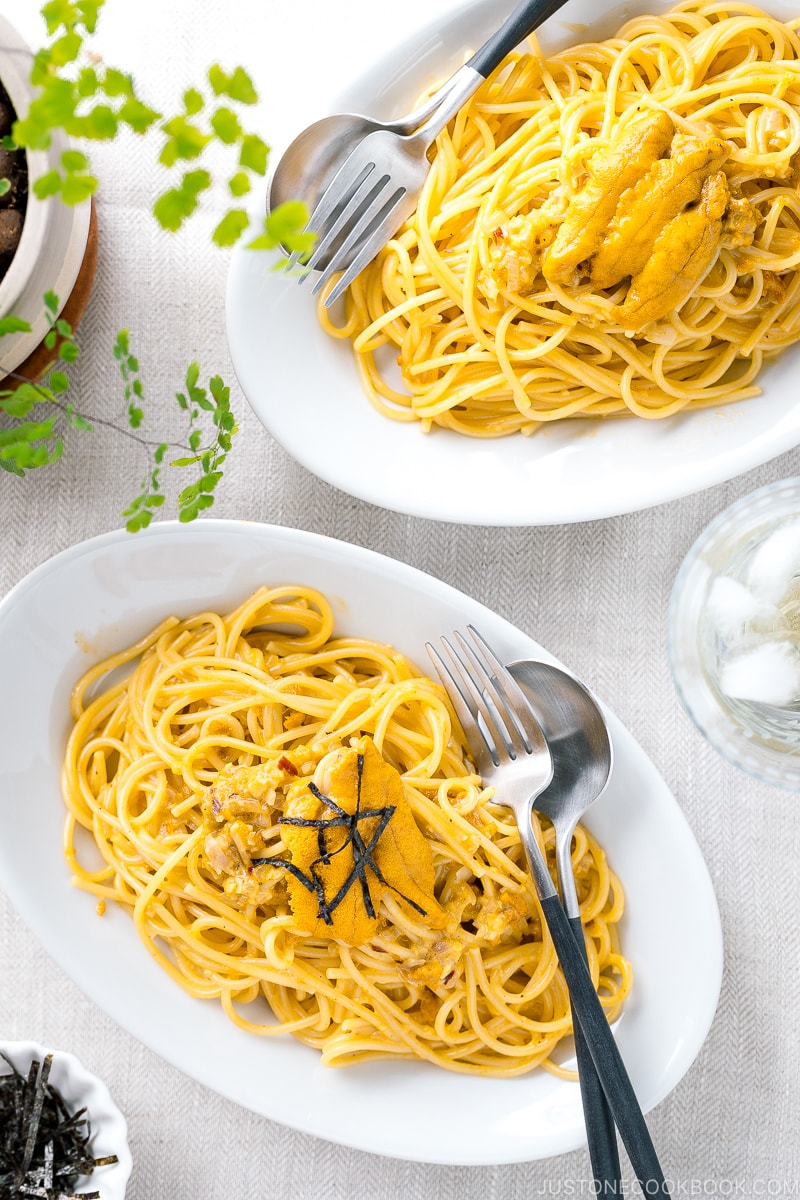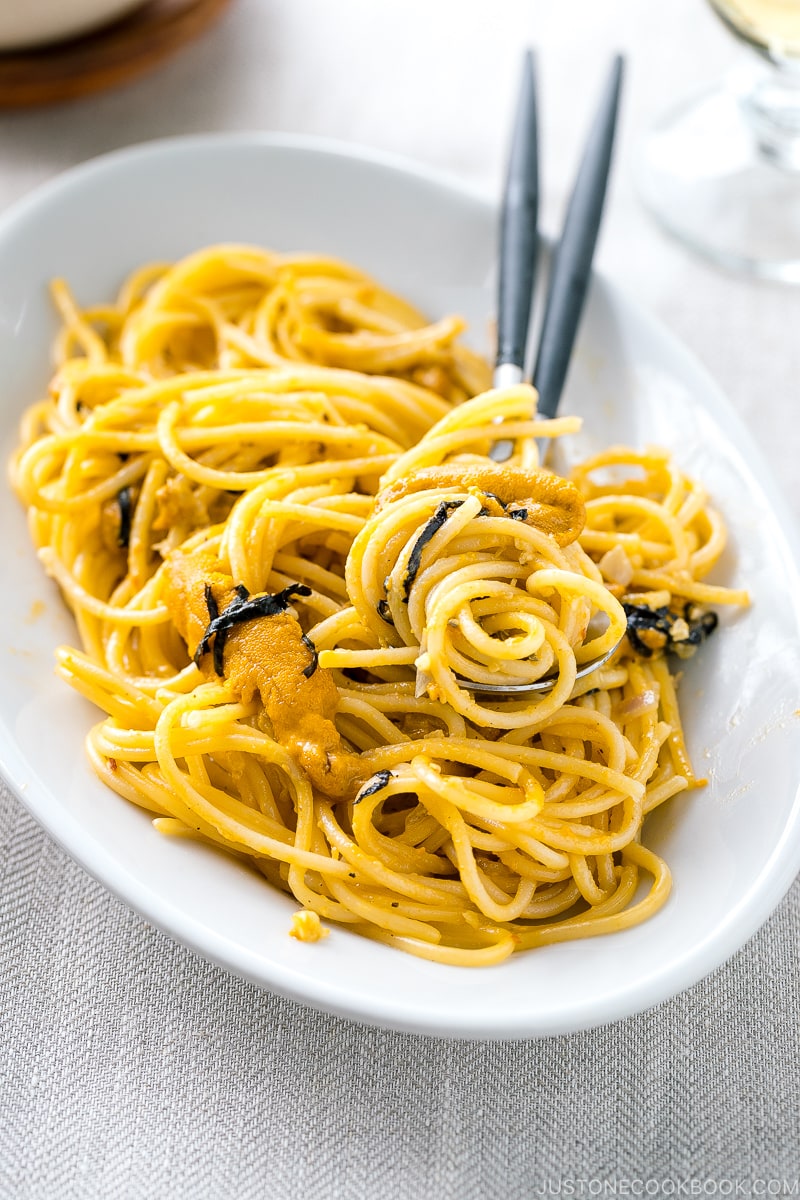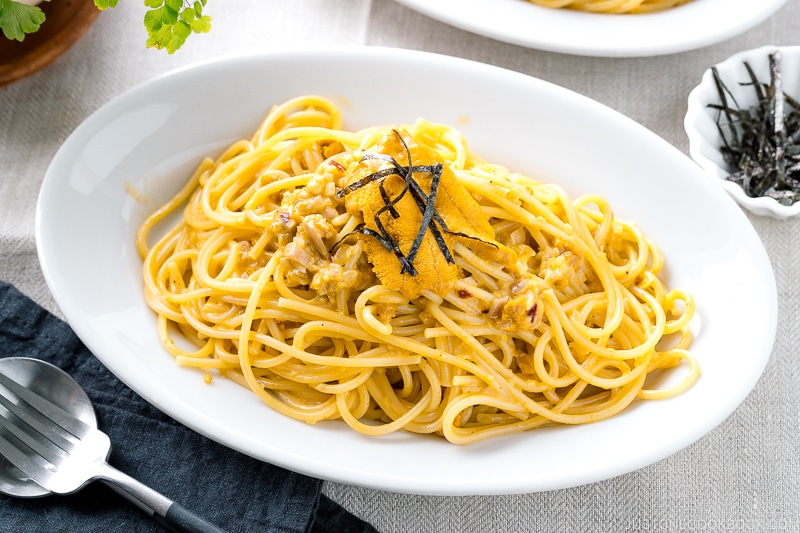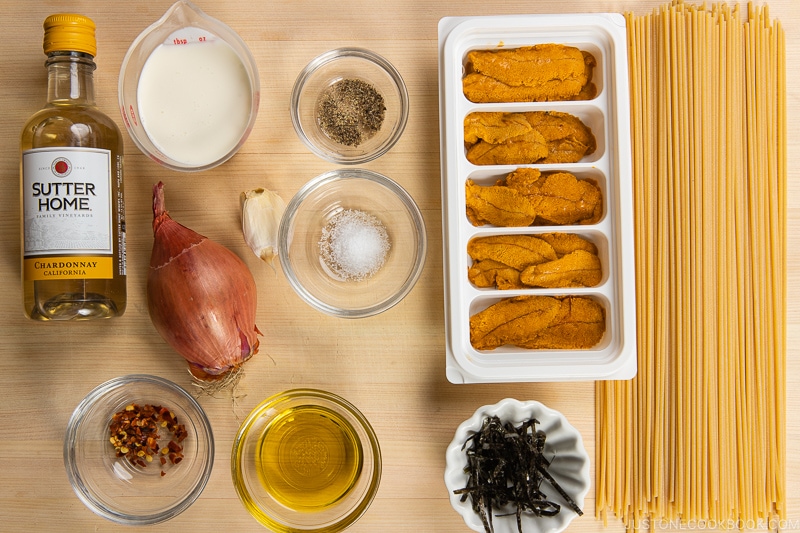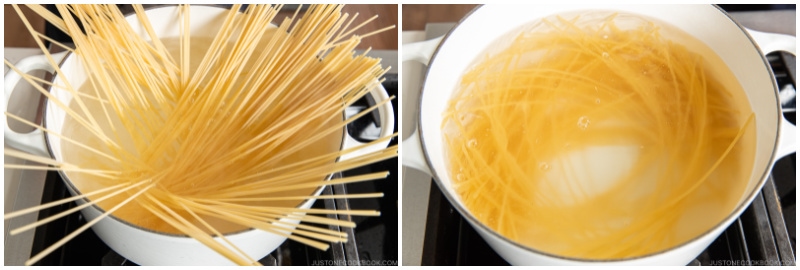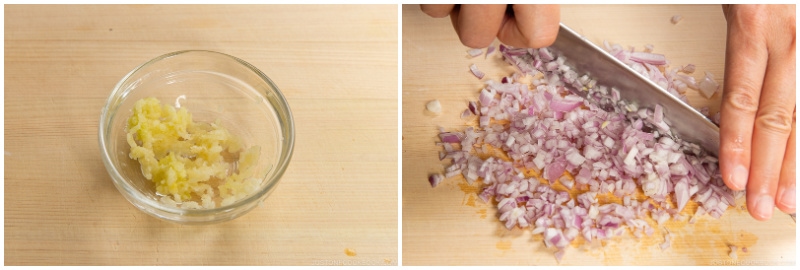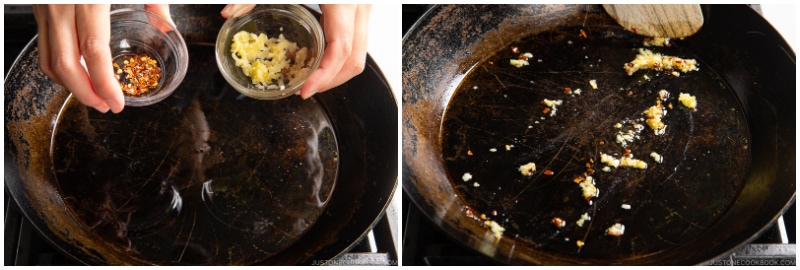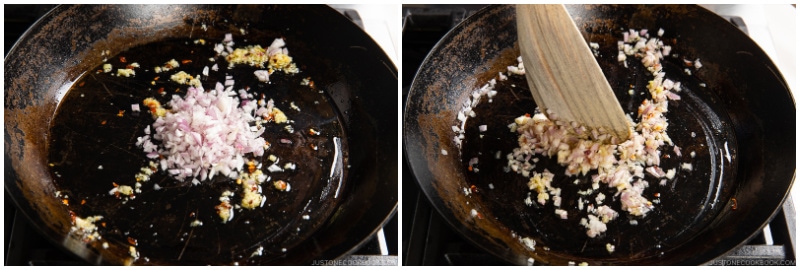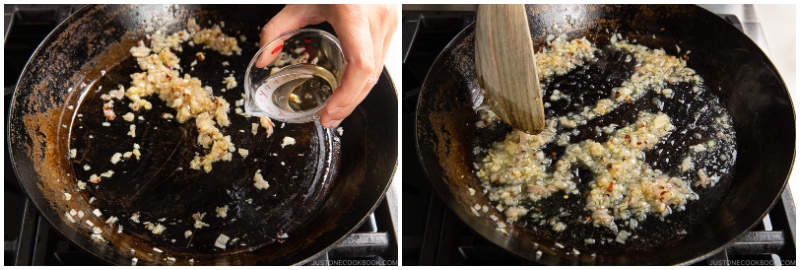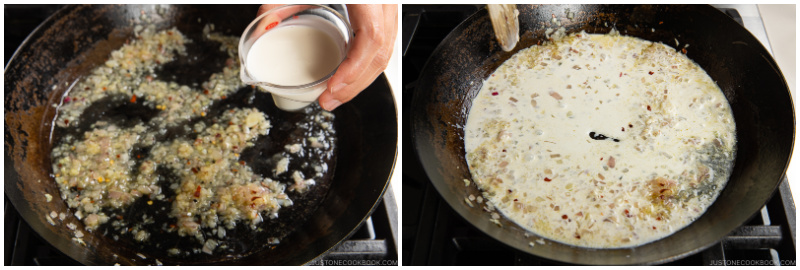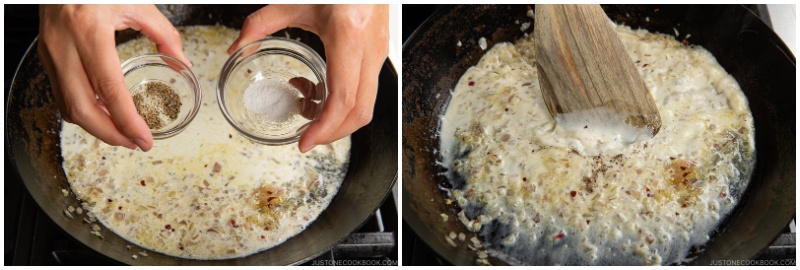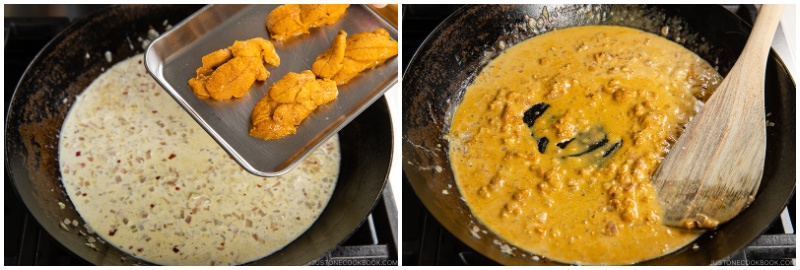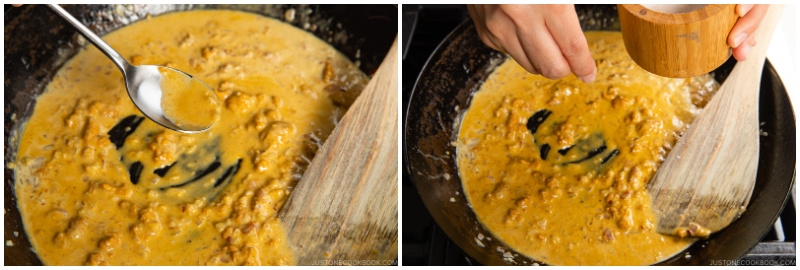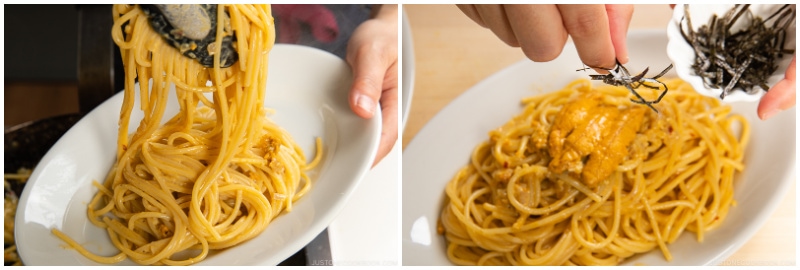Sometimes all you need is one exceptional ingredient to make a seriously good pasta. I’ve introduced quite a number of Japanese-style pastas in the past, but today’s recipe—Uni Pasta (うにパスタ)—feels so rich and special. It is at the top of the readers’ requested list, so I am happy to finally bring this pasta to the blog. Ready to make your weeknight cooking a fun adventure? You’ll need just a handful of ingredients. As for fresh uni, get it from the Japanese markets or online.
What is Uni Pasta?
Uni (pronounced [oo-nee]) means sea urchin in Japanese. Uni Pasta (うにパスタ) is a creamy Japanese-style pasta starring sea urchin. In this recipe, we have al-dente spaghetti coated with a luscious orange sauce made with fresh sea urchin, heavy cream, and white wine. The ingredients for the pasta are very simple, yet the sweet and salty uni flavor takes the center stage. The rest like sautéed garlic, shallot, and red pepper flakes work alongside to bring this gem together.
What Does Uni Taste Like?
If you haven’t tried uni, you’d be most curious about its taste. Uni is loved by its one-of-a-kind seafood flavor profile: rich, savory, intricate, and custardy. Some say it resembles oysters or scallops, with sweetish and creamy notes. Personally, I think fresh uni is amazingly delicate in taste and buttery in texture. If you get a good quality uni, it’s never fishy but instead, has the enticing taste of the ocean. Like earthy ocean truffles! When used in pasta, uni lends an unexpected but sumptuous umami undertone, which gives the creamy sauce all the richness it needs. A certainly mega wow factor. Learn more about uni and how it is enjoyed in Japanese cuisine in this ingredient post.
Where to Get Uni (Sea Urchin)?
I usually get uni from local Japanese markets (Suruki Market and Nijiya Market in San Mateo). They carry both uni from Hokkaido, Japan, and Santa Barbara, California. Hokkaido uni is a bit more pricy so when I make uni pasta, I usually get the ones from Santa Barbara. This beautiful bright-orange sea urchin is a delicacy and it’s expensive. However, you don’t need that much—1.5 ounces (43 g) per person, including a few pieces for topping.
How to Make Uni Pasta
Ingredients You’ll Need
Spaghetti – Long pasta such as spaghetti or bucatini or angel hair would be best. Fresh uni (sea urchin roe) – It is the main flavor of the pasta dish, so please use the amount specified in the recipe, not less. Garlic – Just one large clove would be more than enough. You don’t want too much garlic to overpower the flavor. Crushed red pepper or red pepper flakes – Can’t take spicy heat? Still, don’t omit it. You’ll use just a tiny amount of red pepper flakes. The role is not to add heat, but to punch up the flavor. The uni sauce might be too bland without red pepper flakes. They add dimension and I find them necessary. Use less amount if needed. Red chili pepper flakes are made from one pepper type – chilies and they are hot, while red pepper flakes are made from a mixture of peppers and are hotter. Shallot – Shallot is more flavorful than onion but if you don’t have it around, you can substitute onion for the shallot. Extra virgin olive oil White wine – The wine offers a slightly acidic element to balance the richness of the sauce, and helps bring the flavors of each ingredient. Allow most of the alcohol to cook off. Heavy whipping cream – Sea urchin The heavy cream helps thin out the sauce. Salt and pepper Shredded nori (kizami nori) for topping (optional) – It’s one of the classic toppings for Japanese-style pasta. You can also sprinkle with a small amount of a fresh chopped herb like chive, but don’t use a strongly scented/flavored herb like parsley because it conflicts with uni.
Overview: Cooking Steps
5 Important Tips to Remember
Don’t overcook the pasta. Al dente is a must. I usually cook 1 minute less than the package instruction when I have to coat the pasta with the sauce in a frying pan. Don’t burn the garlic and red pepper. Use medium-low heat to slowly cook the garlic and red pepper to bring out the flavors. Reserve the pasta cooking water. The salted pasta cooking water is very helpful for seasoning and diluting your pasta sauce. Before draining the water, make it a habit of reserving 1/4 to 1/2 cup, even though you may end up not using it. Always check the taste of the pasta sauce before you add the pasta. The sauce should be slightly stronger (saltier) as the flavor gets diluted slightly with the cooked pasta. Uni pasta should be served immediately. The sauce will be coated with spaghetti and it can get dry if you leave it out. If you plan to serve the pasta with salads, drinks, or other dishes, prepare everything before you start cooking pasta.
What to Serve with Uni Pasta
This uni pasta recipe makes the simplest fancy-ish dinner. Pair it with a refreshing salad and some chilled white wine or sake. So so good!
Japanese Kani Salad Easy Carrot Salad Seafood Salad with Vinaigrette Spinach Salad with Asian Dressing Arugula Salad with Fennel and Naval Orange
Other Japanese-Style Pasta to Try
Japanese Pasta with Shrimp and Asparagus Miso Butter Pasta with Tuna and Cabbage Shiso Pesto Pasta Japanese-Style Tuna Mushroom Pasta 10 Popular Japanese Pasta Recipes For Dinner (Ready in 30 Minutes)
Wish to learn more about Japanese cooking? Sign up for our free newsletter to receive cooking tips & recipe updates! And stay in touch with me on Facebook, Pinterest, YouTube, and Instagram.
